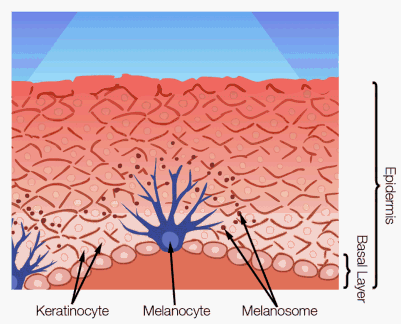How Hyperpigmentation Is Formed
Hyperpigmentation is a harmless skin condition triggered by an overproduction of melanin which causes the skin to appear darker. Melanin is responsible for producing the pigment that determines eye, hair and skin colour; it is a dark-brown pigment that is a natural filter from UV rays. Melanocytes, found in the bottom layer of the skin’s epidermis, are the cells responsible for the production of melanin. The pigmentation process encompasses 3 major stages:
|
1. Melanin is created when tyrosinase, an enzyme naturally found in the body, converts tyrosine into melanin.
2. Melanin is then held in melanosomes which start to migrate to the surface of the skin.
3. Once the melanosomes are mature they are transferred to keratinocytes, and are then moved to the surface of the skin.
Hyperpigmentation such as melasma, age spots and uneven skin tone can add an average 10 to 15 years to woman’s perceived age. Fortunately, in most cases, the appearance of hyperpigmentation can be improved dramatically by chemical peeling, photorejuvenation or fractional laser resurfacing.


Hello!
I was born with pigmentation around and on my lips. It has been bothering my because it makes my skin look uneven and I can’t wear different lipstick shades. I would like to know if there are any treatments in order to remove the pigmentation on and around my lips.
Hi Sara, thank you for your interest in Q Esthetics! Please contact one of our two locations near you:) We can definitely help assist you to improve the appearance of pigmentation.
Can your discolouration lasers work on hyper pigmented underarms?